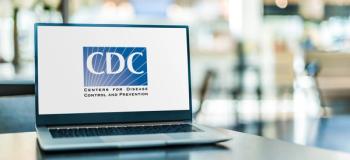
Minority Report: With dramatic demographic shifts under way in this country, pharmacies should tailor their marketing to multiethnic groups
With dramatic demographic shifts under way in this country, pharmacies should tailor their marketing to multiethnic groups.
According to data from the 2005 American Community Survey released in August by the U.S. Census Bureau, Hispanics increased their hold as the country's largest minority group, with 14.5% of the population, compared with 12.8% for African-Americans. California, New York, Texas, and Florida reported the nation's largest immigrant populations. But less expected destinations such as the Upper Midwest, New England, and the Rocky Mountain states are beginning to see immigrant activity. Indiana saw a 34% increase in the number of immigrants from 2000 to 2005; South Dakota saw a 44% hike; Delaware, 32%; Missouri, 31%; Colorado, 28%; and New Hampshire, 26%.
With immigrants showing up in many more communities nationwide than ever before, the question that must be asked is, How should pharmacies tailor their marketing and services to meet the needs of these rapidly increasing ethnic groups?
In September, Kerr Drug, Raleigh, N.C., launched an in-store translation service for Hispanic customers in 11 stores in the Charleston, S.C., market. Diane Eliezer, Kerr's director of marketing, said, "The service allows Latino customers to approach a pharmacist and say, 'I need translation.' The pharmacist calls a number, and they are hooked up in a three-way phone call. The service, which can only be accessed in the store, is provided through Dial America. Pharmacists are excited about the service because some of them are frustrated by their inability to communicate clearly with patients."
Eliezer said the free service, which is intended to help customers with their questions about prescriptions and over-the-counter items, is being promoted with signage in stores as well as in TV, radio, and print ads. In addition, Kerr Drug has reached out to the South Carolina Hispanic/ Latino Health Coalition in Charleston, so that the coalition can inform Hispanic and Latino residents about the new service. If the service is successful, it will be rolled out to stores in the North Carolina market.
Earlier this year, Walgreens launched a program called "Dial a Pharmacist." The program enables patients at the pharmacy counter to have a telephone consultation in their native language with a Walgreens pharmacist. Walgreens spokesman Michael Polzin explained, "It's a system that is built into our pharmacy computer system. If a patient needs counseling in his or her native language, our pharmacist can look in the computer and find another Walgreens pharmacist anywhere in the country who is currently working and who speaks the patient's language. The patients can talk over the phone to the pharmacist. The pharmacist can counsel patients on their medications or answer questions they have related to their prescriptions." Polzin said that more than 100,000 patients have used the system in just the first few months.
Noting that close to 20% of the U.S. population speaks a language other than English, Polzin said Walgreens maintains a database of the languages that its pharmacists speak. Twenty percent of Walgreens stores have at least one bilingual pharmacist. The chain also provides its pharmacists with a translation card that contains some common phrases in different languages.
Walgreens also targets its stores' merchandise to different populations in certain neighborhoods. "We carry different shades of cosmetics and different ethnic food items depending on the demographics of that area," said Polzin.
Newsletter
Pharmacy practice is always changing. Stay ahead of the curve with the Drug Topics newsletter and get the latest drug information, industry trends, and patient care tips.













































































































































